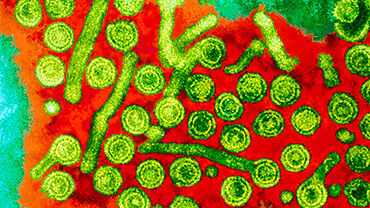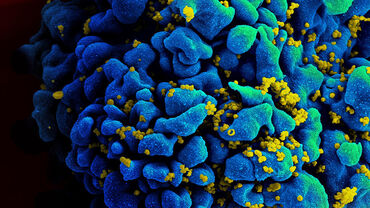Prevention and control of infectious diseases among people who inject drugs - 2023 update
In the European Union/European Economic Area (EU/EEA) and countries in the eastern European Neighbourhood Policy (ENP) area, hepatitis B and C, HIV and tuberculosis (TB) continue to circulate and cause substantial morbidity and mortality. These diseases are the focus of the United Nations (UN) Sustainable Development Goal (SDGs) 3.3, which is to ‘end the epidemics of AIDS, tuberculosis, malaria and neglected tropical diseases and combat hepatitis, water-borne diseases and other communicable diseases’ by 2030.
Executive Summary
Injecting drug use remains an important risk factor for acquiring blood-borne and other infectious diseases in the EU/EEA and ENP area. Prevention and control of infectious diseases among people who inject drugs is important because these diseases reduce individuals’ quality of life and life expectancy. Ultimately, they can lead to both indirect and direct societal costs through, for example, lost productivity, high treatment and care costs, and risk of onward transmission to others, including those who do not inject drugs.
This joint guidance by the European Centre for Disease Prevention and Control (ECDC) and the European Monitoring Centre for Drugs and Drug Addiction (EMCDDA) aims to support policy-makers and public health/social programme planners by providing an evidence base for developing national strategies, policies, and programmes for preventing and controlling infections and infectious diseases among people who inject drugs. It also provides practice considerations and aims to inform the monitoring and evaluation of prevention and control strategies, policies, and programmes.
This guidance is an update to the 2011 guidance on the same topic, accounting for advances in harm reduction and infectious diseases prevention and control, the emergence of new public health concepts and interventions, and stakeholder needs. It provides an overview of the epidemiological situation of drug-related infectious diseases and identifies evidence-based interventions for preventing and controlling infectious diseases among people who inject drugs. The main infectious diseases covered are hepatitis B, hepatitis C, HIV, and TB. Other infections for which people who inject drugs may be at higher risk are also discussed in less detail, including respiratory infections such as COVID-19 and influenza, skin and soft tissue infections, and sexually transmitted infections (STIs). While the guidance focuses primarily on people who inject opioids, the proposed interventions may also be relevant for people who inject other substances, such as cocaine, amphetamines, synthetic cathinones, and medicines, either separately or in combination (polydrug use).
Drawing on the most robust evidence available, alongside expert opinion and what is regarded as best practice according to existing international guidelines, several key intervention areas to prevent and control infectious diseases in this population are recommended. To provide maximum benefit, these interventions should be delivered in line with principles for prevention and service provision. These include implementing specific interventions in combination, to maximise coverage and effectiveness and in the context of other relevant health promotion activities that target structural and individual factors that promote healthier and/or safer behaviours.
Regarding people who inject drugs, the aim of health promotion should be to reduce the risk of individuals contracting and transmitting infectious diseases through injecting drug use and other means. At the structural level, WHO recommends that enabling interventions should, among other measures, involve removing punitive laws, policies, and practices such as the criminalisation of possession of needles and syringes which impacts on the ability of harm reduction programmes to operate needle and syringe programmes; reducing stigma and discrimination; promoting community empowerment; and addressing violence against people who inject drugs. At the individual level, health promotion activities should be focused on moving towards safer injecting behaviour and reduced injection frequency, transition to non-injecting drug use, cessation of drug use if desired, and safer sexual behaviour, as well as infectious diseases prevention, testing, and treatment knowledge.
Condoms, together with health promotion information and referrals to primary care or sexual health services, should be provided based on client need in harm reduction settings, drug consumption rooms, through community outreach, including settings where drugs are used in the context of sex, and in prisons and pharmacies.
Download

Read the translated guidance in brief
Public health guidance
Guidance in brief: Prevention and control of infectious diseases among people who inject drugs - 2023 update
This joint guidance by the ECDC and EMCDDA aims to strengthen the evidence base for developing national strategies for preventing and controlling infections and infectious diseases among people who inject drugs.







